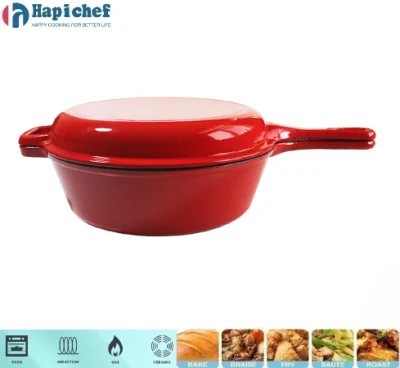Using a Cast Iron Skillet on a Glass Top Stove Safely and Effectively
Using a Cast Iron Skillet on a Glass Cooktop Tips and Considerations
Cooking is an art, and the tools we use can shape our culinary experiences. One beloved kitchen tool is the cast iron skillet, known for its excellent heat retention and even cooking. However, using a cast iron skillet on a glass cooktop can lead to some concerns and requires a thoughtful approach. Here’s a comprehensive guide on how to safely enjoy cooking with your cast iron skillet on a glass cooktop.
Understanding Your Cooktop
Glass cooktops, often made of ceramic glass, are sleek and easy to clean. However, they are more delicate than traditional gas or electric coil stovetops. The surface can scratch, crack, or shatter if not handled carefully. Cast iron skillets, while exceptionally durable and effective, can pose a challenge due to their weight and rough, often uneven bottom surfaces.
Potential Risks
1. Scratching The rough texture of a cast iron skillet can easily scratch a glass cooktop. Avoid dragging the skillet across the surface. Instead, lift it entirely when moving it.
2. Weight Issues Cast iron skillets are heavy, and dropping one onto the cooktop can cause serious damage. Always handle it with care.
3. Heat Distribution Glass cooktops tend to have uneven heat distribution, particularly if the skillet has a warped bottom. This can lead to hot spots and uneven cooking.
4. Thermal Shock Rapid temperature changes can crack glass cooktops. Avoid placing a cold cast iron skillet on a hot burner or vice versa.
cast iron skillet on glass cooktop

Tips for Safe Cooking
1. Choose the Right Skillet Opt for a cast iron skillet with a smooth bottom or one that is specifically designed for use on smooth top ranges. These are less likely to scratch the glass surface.
2. Lift, Don’t Drag Always lift your skillet to prevent scratching the glass surface. When cooking, set it down gently and avoid sliding it around.
3. Monitor Temperatures Start at a lower heat setting, especially if you are unfamiliar with how your cooktop heats. You can gradually increase the temperature as needed. This precaution not only helps prevent thermal shock but also gives you better control over your cooking.
4. Use Flat-Bottom Cookware When using any cookware on a glass cooktop, choose those with a flat bottom. This will help ensure better contact with the heating element, promoting even cooking and reducing the risk of scratches.
5. Regular Maintenance Always clean your glass cooktop after use to remove any food particles or stains. This prevents debris from being trapped under your cookware and causing scratches.
6. Consider Weight Distribution When using a large cast iron skillet, try to distribute its weight evenly on the burner, and avoid placing it over multiple burners if possible, as this can stress the glass surface.
Conclusion
Using a cast iron skillet on a glass cooktop can be a delightful experience if approached with care. The robust nature of cast iron combined with the polished elegance of a glass cooktop can result in delicious meals and an enjoyable cooking experience. By following these tips and respecting the limitations of both your skillet and cooktop, you can fully harness the benefits of cast iron cooking without compromising your glass surface. Whether you're frying, sautéing, or baking, your cast iron skillet can still be an invaluable tool in your kitchen arsenal. Happy cooking!
-
Why Ecast Iron Grills Are Heating Up Outdoor CookingNewsMay.23,2025
-
Why Cast Iron Cookware Belongs in Every Kitchen?NewsMay.23,2025
-
Why Cast Iron Bakeware Is a Timeless Kitchen EssentialNewsMay.23,2025
-
Upgrade Your Kitchen with Cast Iron Bakeware SetsNewsMay.23,2025
-
Master Outdoor Cooking with the Camping Dutch OvenNewsMay.23,2025
-
Casserole Cast Iron Cookware for Rich, Slow-Cooked FlavorNewsMay.23,2025
-
The Ultimate Guide to Cast Iron Deep Dish Pizza PerfectionNewsMay.21,2025
